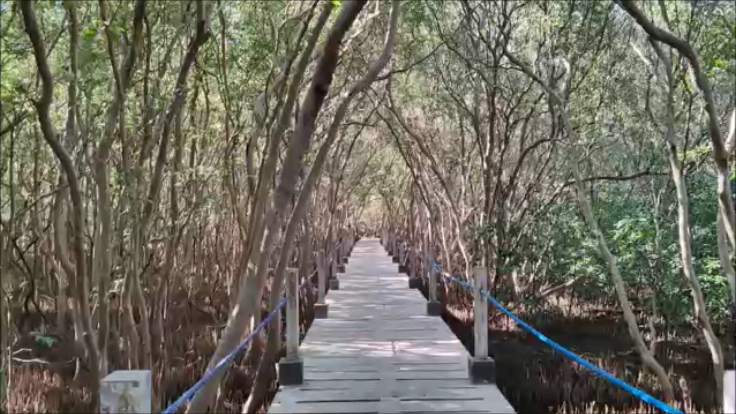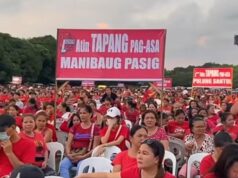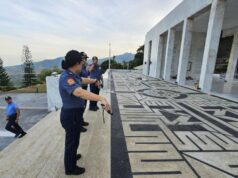BALANGA City, Bataan: Wetlands in the Philippines face threats and need to be safeguarded and restored to reduce the impacts of floods and droughts, wetland experts lectured in Balanga City, Bataan Monday.
The Wetland International Philippines held a knowledge – building session at The Bunker, seat of the provincial government, and a media tour to the Balanga City Wetland and Nature Park in Barangay Tortugas.
Under types of wetlands are mangroves, mudflats, marshes, rivers and lakes, deltas, floodplains and flood forests and ricefields.
Jocel Pangilinan, Project Manager of To Plant or Not to Plant of Wetlands International, said many of the country’s wetlands have been destroyed.

She cited, for example, the planting of mangroves on mudflats in the absence of maps for mangrove restoration.
“Karamihan na natatarget for mangrove restoration ay mudflats so napapalitan natin ang supposedly feeding ground ng ating mga migrant o migratory birds. Napapalitan ng ibang ecosystem,” she said.
Another example Pangilinan mentioned about the destruction of wetlands was about seagrass that was planted with mangroves.
“Dati siyang seagrass ngayon naging mangrove na kasi tinaniman natin ng mangrove. Actually, after sometime ang mangrove na itinanim natin doon mamamatay din iyon kasi hindi iyon ang kanyang natural na habitat,” she furthered.
Pangilinan said that in year 1900, the country had 450,000 hectares of mangroves but in 1970s to l980s, the area was down to 200,000 hectares. She said that it is good that the area planted to mangroves recovered with 330,000 hectares from 1990 to the present.
She clarified, however, that included in the number of hectares are even improper planting sites and she was not saying that all the mangroves were in the right planting areas.
Dr. Michael Roleda, Professor, Marine Science Institute in UP Diliman, discussed the major threats to Philippine wetlands such as domestic, industrial and agricultural pollution, introduction of exotic species, incompatible tourism activities, wetland to other use, resource (unsustainable) use and (over) exploitation, overlapping and conflicting policies and climate change.
He explained about the current interventions like replanting/restoring mangrove forests, conservation of small mangrove patches, Inclusion of mangroves (together with coral reefs and seagrasses) in marine protected areas (MPAs).
Other interventions the professor mentioned are to pursue mangrove forest research, promote positive public perceptions of mangrove forest, develop a global model and map of mangrove restoration potential to help practitioners prioritize areas, and support mangrove restoration projects globally and conduct mangrove and beach forest training course.
Fisherman Rolando Villaseñor of the City Fisheries and Aquatic Resources Management Council said during high tide, many alimasag ang alimango (crabs) are caught in the mangrove area of the Balanga City Wetland and Nature Park.
Benjie Manuel, also of CFARMC, said the mangroves served as breeding ground of fish and crabs, resulting in the bountiful fish catch of fishermen.
The two fisherfolk leaders pointed to the problem on wastes in Manila Bay especially during the northeast monsoon. They claimed that the wastes came from other areas and not from Balanga City.
They said they were thankful that fishermen with the help of their city government, the barangay and the city environment and natural resources office work as one in bayanihan spirit to clean the garbage.
Manuel said they have to help in maintaining cleanliness along Manila Bay adjacent to the city wetland. He said there are many visitors coming to the park to breath fresh air and feel the heat of the sun
“Ikinaganda nitong wetland park, ginawa itong pasyalan. Madaming pumapasyal dito kahit mga taga-ibang bayan. Nagugulat sila pagpunta dito dahil kahit inaabot sila ng tanghali, fresh pa rin ang pakiramdam nila,” Villaseñor said.
Alan Balbuena, City of Balanga Wetland Park Tourism officer, said that of the wetland park’s area of 34 hectares, 15 hectares have full-grown mangroves.
A 328 – meter concrete trail conveniently affords visitors to go inside the mangrove swamps and feel the cool breeze.
Balbuena said busloads of students from different schools in Manila and other provinces and employees of Local government Units keep visiting the park.
He said that the wetland park is expected to be filled with people on Thursday, February 29, 2024, when the Ibong Dayo festival will be held.




